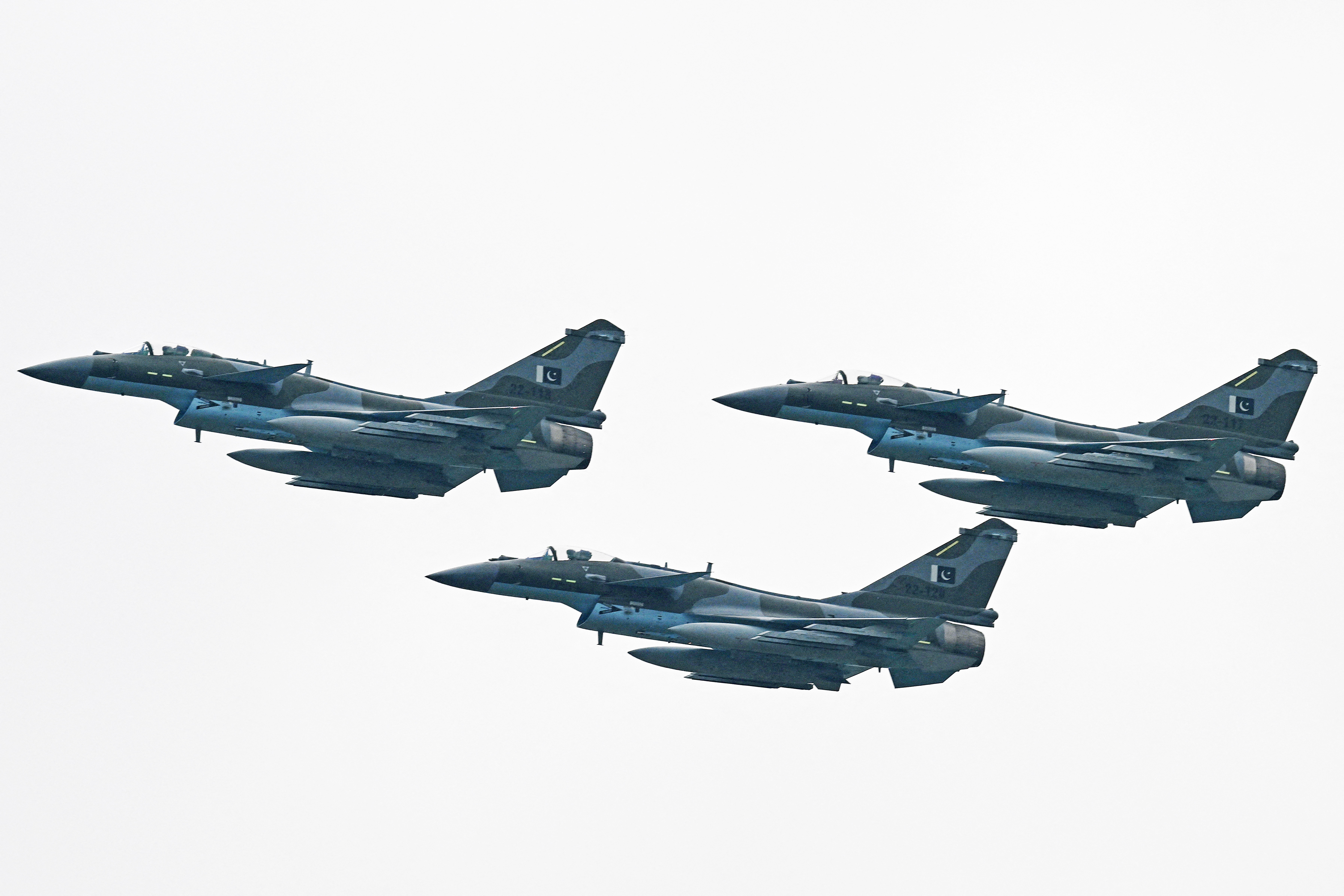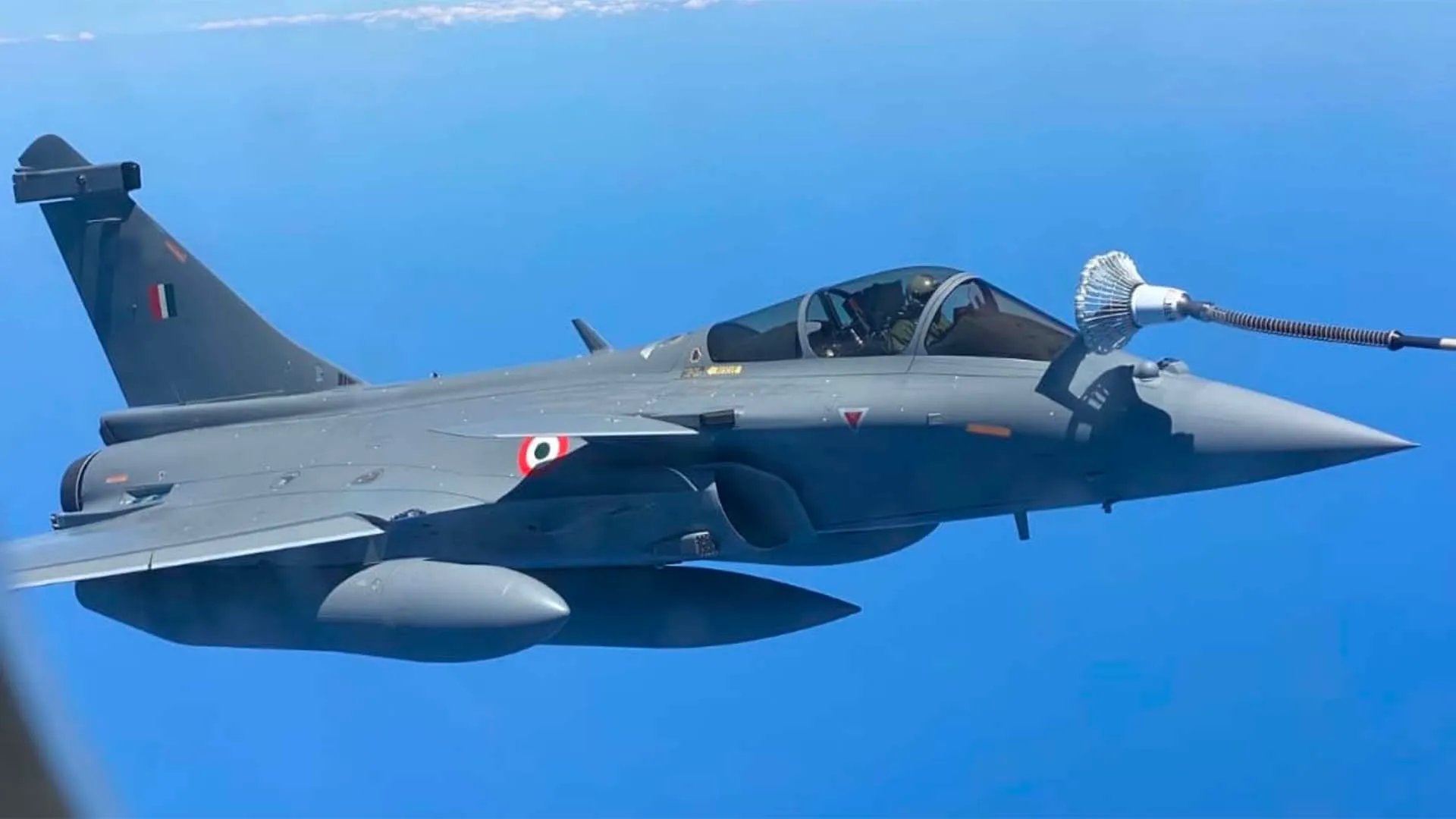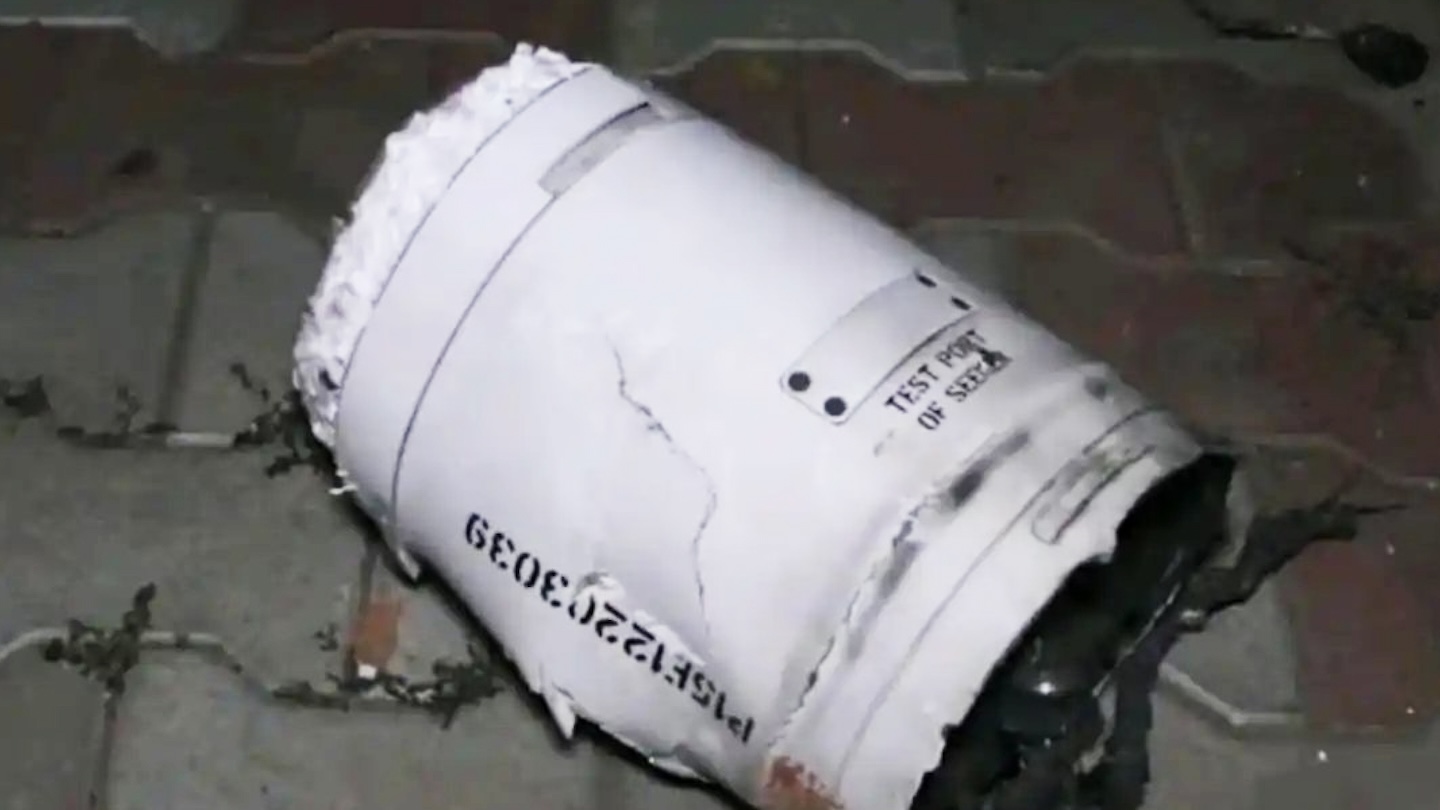The air war currently unfolding between India and Pakistan is exceedingly murky, but one aspect that seems almost certain is the use of the Chinese-made PL-15 active-radar-guided air-to-air missile (AAM) by Pakistan. So far, Pakistan claims to have shot down five Indian aircraft, and there are multiple accounts, including from Indian officials, pointing to the crash of at least two aircraft, without specifying the reasons. Meanwhile, a French official has reportedly confirmed the loss of one of the Indian Air Force’s prized Rafale multirole fighters. Regardless, the fighting between the two nuclear-armed states is the most intense for decades, now with the growing risk of the situation spiraling further.
Imagery showing the apparent wreckage of a PL-15 missile began circulating on social media today. Reportedly, the missile parts fell in Hoshiarpur district, in the northeast of the Indian state of Punjab. In particular, a portion of the missile body, from immediately behind the radome, can be identified. This carries a serial number and a small door marked as a seeker test port, as seen at the top of this story.
Another image purports to show the missile seeker from the PL-15, which uses active electronically scanned array (AESA) technology, with active and passive modes, and which is said to provide better resistance to countermeasures than previous Chinese AAMs.
While the identity of the weapon can’t be verified beyond doubt at this point, a PL-15 seems most likely. Whether the missile in question successfully brought down a target is unclear. Whatever the case, Pakistan’s use of the missile is a significant development; this seems to be the first confirmed use of the weapon in an operational context.
As you can read about in our in-depth story on Chinese air-to-air missiles, the PL-15 is China’s standard active-radar-guided AAM, and it was intended to at least match the performance of the U.S.-made AIM-120D Advanced Medium-Range Air-to-Air Missile (AMRAAM). From the start, this missile was tailored for internal carriage, initially in the J-20 stealth fighter, and features distinctive cropped fins to reduce its dimensions. A further version, even better optimized for internal carriage, has since appeared, as you can read about here.

The basic PL-15 has a dual-pulse rocket motor that provides a reported range of 124 miles. Another important feature is a two-way datalink that allows the launching aircraft to provide guidance updates to the missile and the missile to provide its own information to the launching aircraft.
The potent PL-15 missile prompted the United States, among others, to start the development of new air-to-air weapons specifically designed to outrange them. In the meantime, the PL-15 is now replacing the older PL-12 across China’s fighter fleet and is also offered for export under the PL-15E name.
Published performance figures for the PL-15E include a range of 90 miles, somewhat less than for the domestic version, which could be the result of a different propellant or changes to the motor.
In Pakistan Air Force service, the PL-15E arms the JF-17 Block III fighter as well as the J-10C, for which Pakistan became the first export customer, with initial deliveries in 2022.

India has a counterpart to the PL-15 in the MBDA Meteor beyond-visual-range missile (BVRAAM), a ramjet-powered weapon that may well offer advantages over the Chinese missile. While Western analysts determine that the PL-15 has a comparable maximum range to the Meteor, the pan-European missile likely has a much larger no-escape zone and better long-range kill probability thanks to its ramjet motor.
Regardless of what the PL-15 was fired at, and whether it successfully engaged its target, Pakistan has posted a flurry of claims of Indian Air Force aircraft shot down.
A report in The New York Times cites three officials, local news reports, and accounts of witnesses, who said that “at least two aircraft” went down in India and the Indian-controlled side of Kashmir.
Various unverified imagery has been posted to social media purporting to show the wreckage of Indian Air Force fighters shot down or otherwise lost in combat. With so much propaganda circulating and information operations ongoing, all open-source imagery has to be taken as unconfirmed.
One of these shows an engine that appears to be from a French-made combat jet, initially identified as either an Indian Air Force Rafale or Mirage 2000, although certain details of the nozzle seemed to point more strongly toward the first option.
Subsequently, a photo began to circulate that purports to show parts of a Rafale’s tailfin and rudder lying in a field, said to be in Bathinda, Punjab. The wreckage bears the serial number BS-001, which would identify it as a single-seat Rafale EH.

A video apparently taken by locals in the village of Aklian Kalan, Punjab, shows what seems to be the remains of an MBDA MICA air-to-air missile, as well as its associated missile launch rail. The MICA is a weapon associated with both the Rafale and the Mirage 2000, although Aklian Kalan is notably only around 12 miles from Bathinda Air Force Station, home to Indian Rafales.
Since this imagery began to circulate, an unnamed French official confirmed to CNN that an Indian Air Force Rafale was brought down by Pakistan, but provided no details of exactly what brought it down.
Other imagery claims to show the wreckage of an Indian MiG-29 Fulcrum or Su-30MKI Flanker fighter, based on the Russian-made K-36DM ejection seat that’s visible. This aircraft is said to have come down in the Ramban district of Jammu and Kashmir, India. Previously, Reuters had reported that an Indian combat jet “crashed” for unspecified reasons somewhere in Jammu and Kashmir, and that its pilot was injured and taken to a hospital. A single pilot, if true, would point toward a MiG-29 rather than the two-seat Su-30.
All of these developments, as well as the surrounding claims and counter-claims, point to the confusion that is very typical when dealing with the heat of combat. With that in mind, it remains possible that at least some of these apparent losses were accidents, or perhaps blue-on-blue incidents. The involvement of surface-to-air missiles also shouldn’t be ruled out at this stage.
And while the loss of a Rafale, especially to a Chinese-designed fighter, if confirmed, would be a huge propaganda win for Pakistan and, to some degree, China, the reality is that modern air combat is far more than a simple fighter-versus-fighter affair. In the long run, other aspects, including training, munitions, networking, airborne early warning, electronic warfare, tactics, and much more, will play into successes and failures. With that in mind, even the combat loss of a Rafale doesn’t make that aircraft a dud, which is good news for the Indian Navy, too, since this service recently had an order for the carrier-based version of the fighter signed off.
In other developments, the office of Pakistani Prime Minister Shehbaz Sharif said that the country’s armed forces have been authorized to undertake “corresponding actions” after India’s strikes on Wednesday night.
For its part, India said that its Operation Sindoor hit nine targets that it described as “terrorist infrastructure” in Pakistan and on Pakistan’s side of the disputed Kashmir region. Indian military spokespersons said that the targets belonged to two Islamist militant groups: Jaish-e-Mohammed (JeM) and Lashkar-e-Taiba (LeT). Indian Foreign Secretary Vikram Misri told a briefing that “Intelligence and monitoring of Pakistan-based terror modules showed that further attacks against India were impending, therefore it was necessary to take pre-emptive and precautionary strikes.”

Pakistan said that six locations on its territory were targeted, but claimed that none of them were militant camps. A Pakistan military spokesperson said that at least 26 civilians were killed and 46 injured in the strikes. In a statement, JeM said that 10 relatives of its leader Masood Azhar were killed in an Indian strike.
Indian police and medics claim that at least seven civilians have been killed and 30 others injured by retaliatory Pakistani firing and shelling overnight.
Based on imagery that has emerged on social media, India appears to have used a version of its BrahMos supersonic cruise missile in at least some of these strikes, alongside attacks by Indian Air Force fighters. Also known by the designation PJ-10, this ramjet-powered weapon was developed and manufactured as a collaborative effort between India and Russia. The BrahMos is available in ground-launched, air-launched, sub-launched, and ship-launched versions, and the missile has a reported range of between 300-500 kilometers (186-311 miles).
The Indian government has said its latest strikes were retaliation for the terrorist attack that killed 26 civilians in Kashmir last month.
This is a developing story. We will update it as more news comes in.
Contact the author: thomas@thewarzone.com
